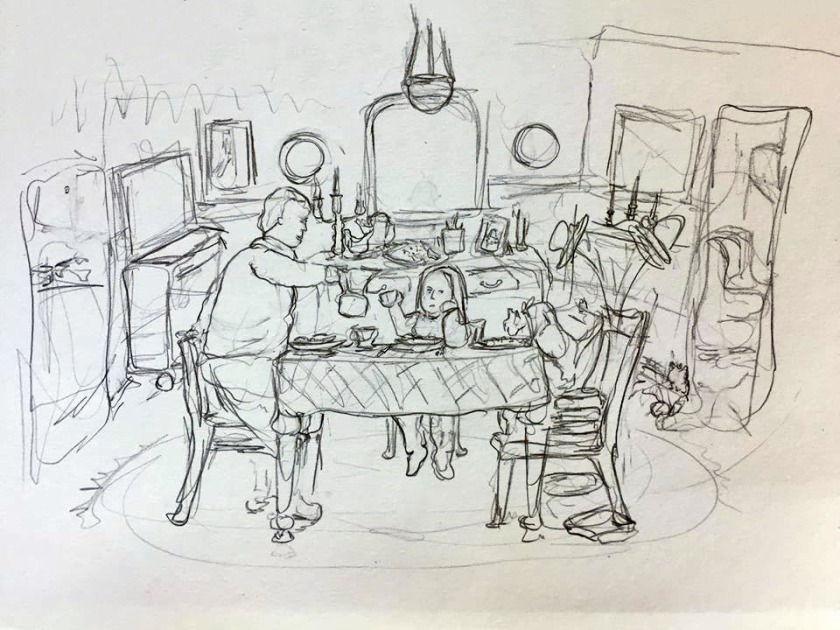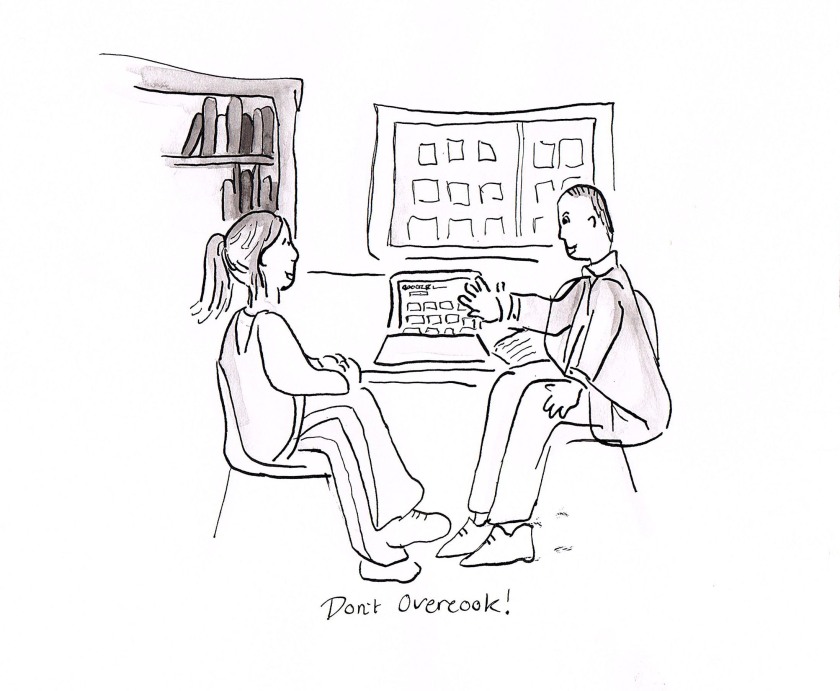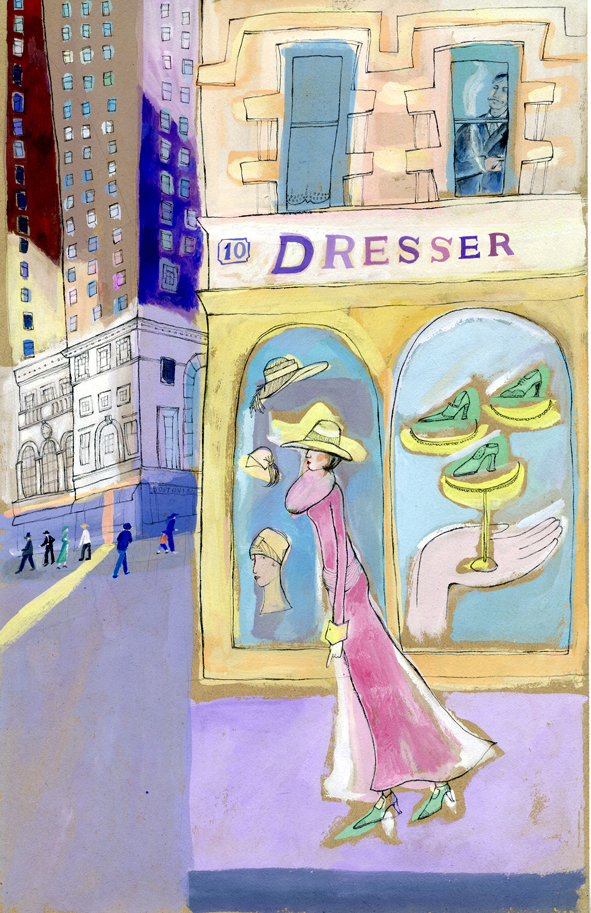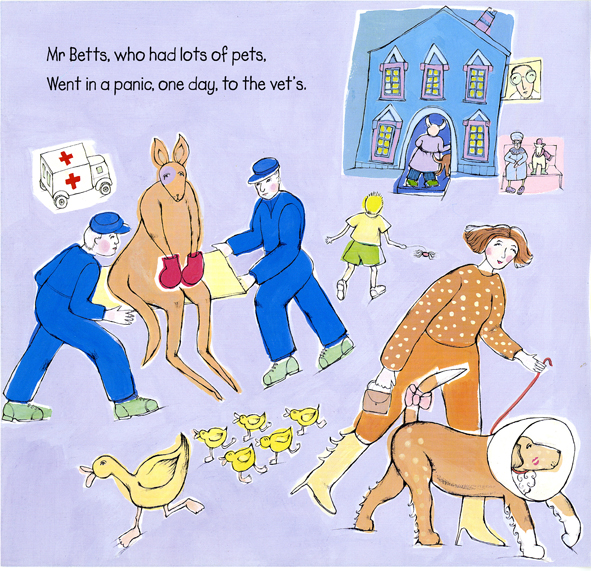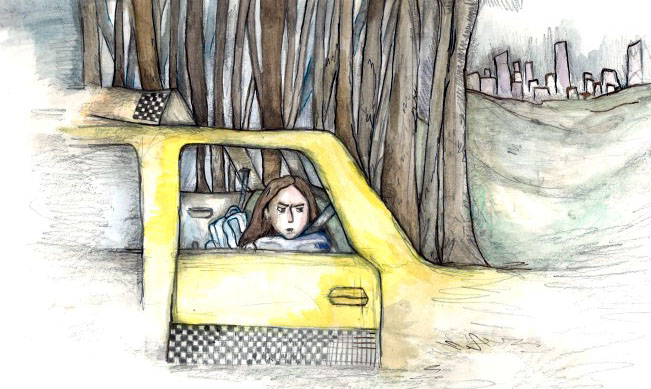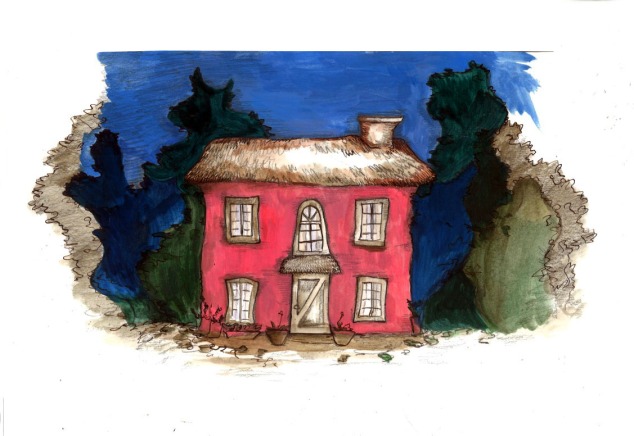These experiments were fuelled from the practice of the artworks produced by Carl Larsson and Jean Paul Hugues collection of 18th century vintage home interior studies.
In these experiments of my Grandma Character (shown below) I explored the Photoshop technique with images that contained more information that had more elements of drawn textures and shading. These results will be thought of and carried into the future approach to my visual image making. I have contemplated the muting of the ‘filling in’ colour aspect and making the line work the strongest telling feature of the work using layers in Photoshop to explore this. Remebering my tutors words of advice to not overcook the my craft.
Studies of Grandma Character Development
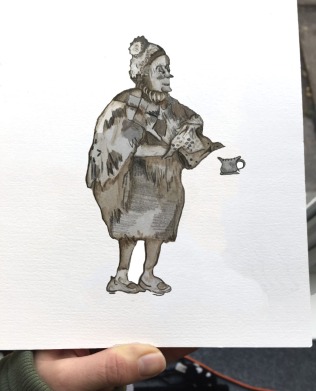
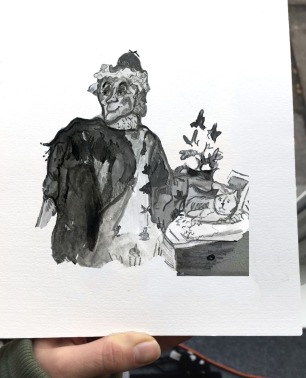
Observational Study of Living Room
I really like how the process of using the magic wand tool on Photoshop creates surprises and accidents to play with. The circular scope of shading that is shown below in my observational study of my family living room was interestingly the result of the flash photography of the original artwork that would have not been present if the original artwork had been scanned. I also feel the attraction to this process of transferring my original artworks is due the fact that the professional rules are typically adviced to the correct process of scanning artwork to capture the better result. However being creative I like to find alternative routes and enjoy the feeling of challenging rules and inviting new perspectives established in the thoughts of my visual image production.
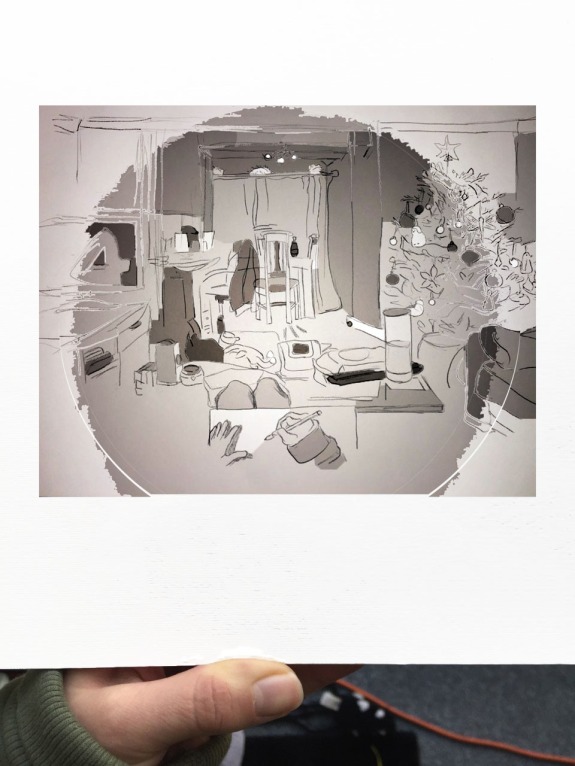



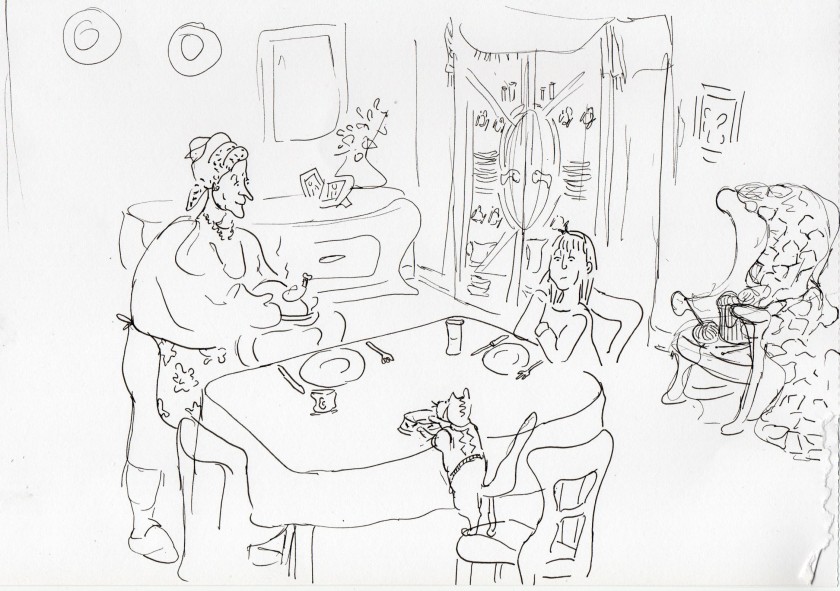


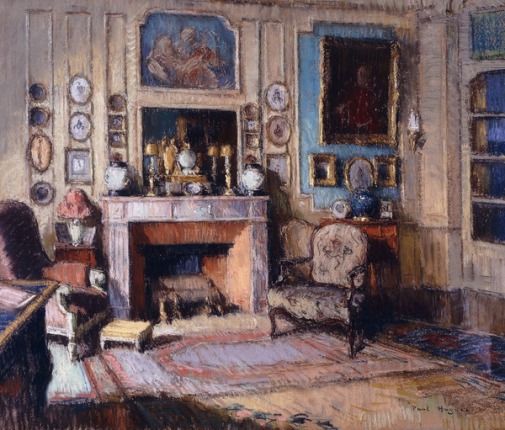




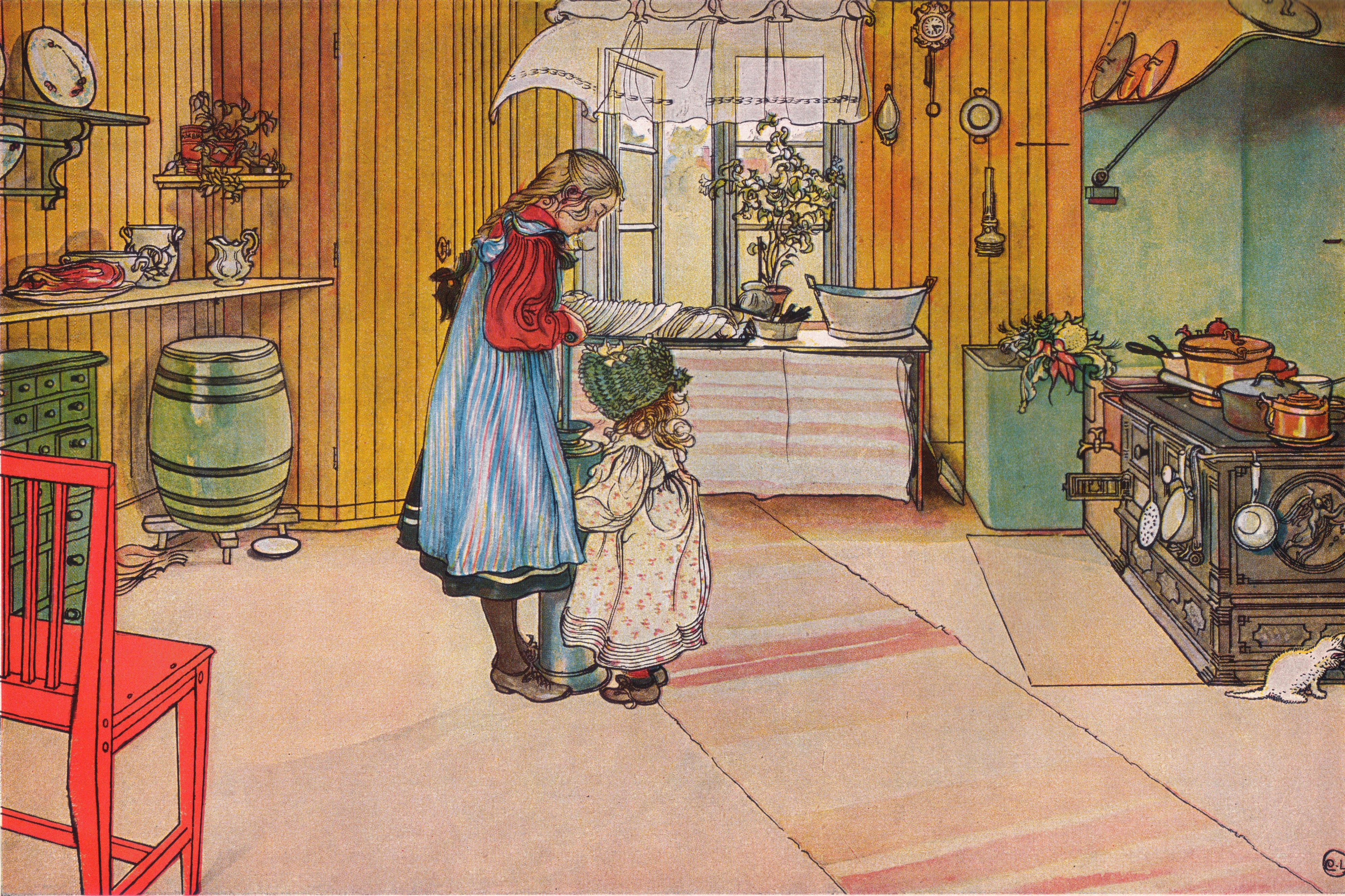
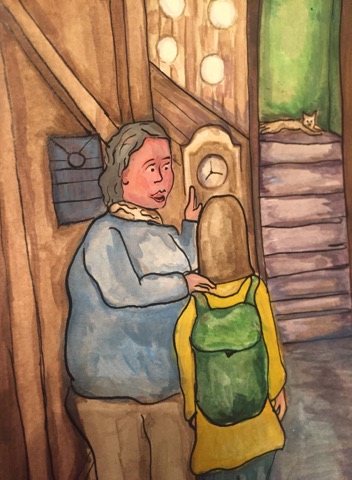 I can see from this image that my line work with ink and pen and on challenging surface such as acrylic paint needs work. As the textures of the acrylic paint is not all as smooth as a plain sheet of paper. The paint creates bumps and this widens the fountain of my pen and creates thicker lines when I didn’t necessary want them. Practice with illustrating other professionals use of materials such as acrylic and ink will hopefully teach me their movements and thinking that should teach me of experienced level of compositions and by breaking down the process I can exercise my skill and technicalities to translate into my own practice. I really do hope to change the opinion that my work is not commissionable/commercial quality yet. It is my ultimate goal to produce highly purchasable outcomes.
I can see from this image that my line work with ink and pen and on challenging surface such as acrylic paint needs work. As the textures of the acrylic paint is not all as smooth as a plain sheet of paper. The paint creates bumps and this widens the fountain of my pen and creates thicker lines when I didn’t necessary want them. Practice with illustrating other professionals use of materials such as acrylic and ink will hopefully teach me their movements and thinking that should teach me of experienced level of compositions and by breaking down the process I can exercise my skill and technicalities to translate into my own practice. I really do hope to change the opinion that my work is not commissionable/commercial quality yet. It is my ultimate goal to produce highly purchasable outcomes.